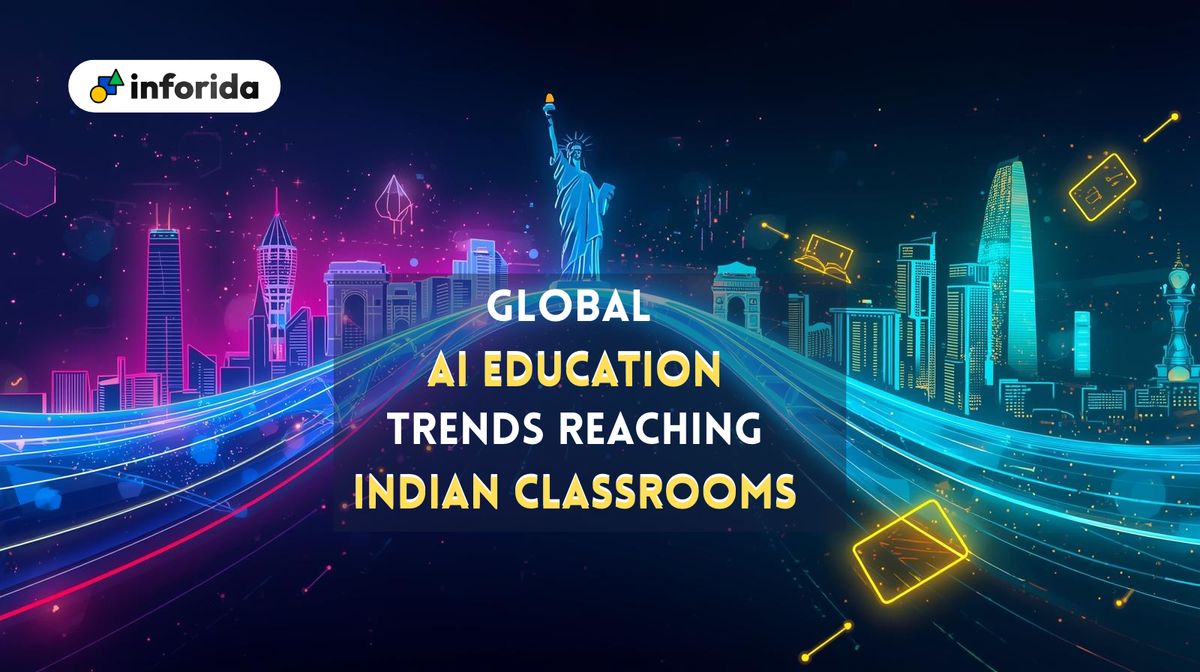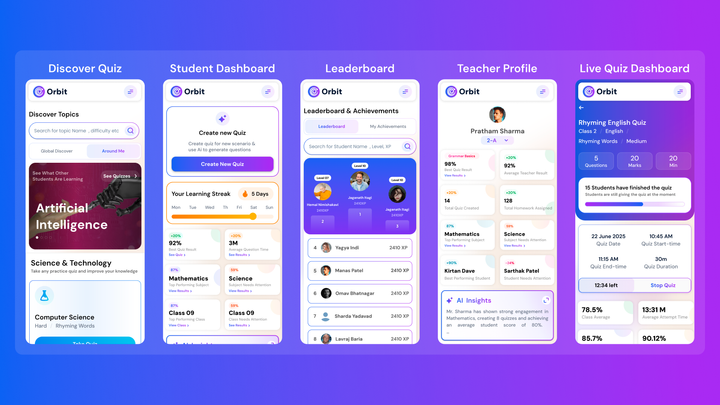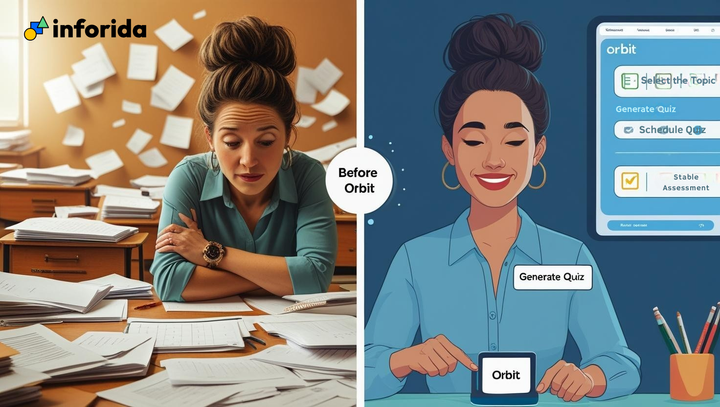NSF’s Big AI Education Move—and Why It Matters for Indian Classrooms
Last week, the US National Science Foundation announced fresh funding to expand AI education in schools. They’re inviting schools and researchers to design age-appropriate AI lessons, train teachers, and even create new career pathways for high school students interested in AI and STEM NSF, 2025.

Quick Take
- The US is putting serious money into K-12 AI education through the NSF, with a focus on early exposure, teacher training, and STEM learning.
- India is already on its own path, with NEP 2020, SOAR modules, CBSE boot camps, and state-level policies like Odisha’s AI curriculum plan.
- Orbit AI is a practical bridge: it lets Indian schools adopt AI learning now while aligning with these global and local shifts.
What’s happening in the US?
Last week, the US National Science Foundation announced fresh funding to expand AI education in schools. They’re inviting schools and researchers to design age-appropriate AI lessons, train teachers, and even create new career pathways for high school students interested in AI and STEM NSF, 2025.
Here’s what’s on the table:
- Expanding K-12 Resources for AI Education (DCL): Funding for projects that refine and scale age-appropriate AI curricula and teacher training.
- Expanding AI Career and Skilled Workforce Opportunities (DCL): Designed for high schools, this supports AI courses, certifications, or dual-enrollment programs.
- STEM K-12 Solicitation: A broader program (about $30M in total) for research into how AI and emerging tech can directly enhance teaching and learning.
The NSF’s assistant director for STEM education, James L. Moore III summed it up clearly
“This is about preparing young people to thrive in an AI-driven society.”
For context, this follows an executive order from the White House earlier this year that pushed for AI education for youth nationwide. The US wants students not just to use AI tools, but to understand them.
Why should Indian educators care?
When the US sets priorities like this, it signals where education globally is heading. And India isn’t far behind. In fact, a lot is already moving here:
- NEP 2020 made space for AI literacy through the National Educational Technology Forum (NETF).
- SOAR (Skilling for AI Readiness) was launched in 2025 with structured 15-hour AI literacy modules for students in classes 6–12.
- CBSE AI Bootcamps, in collaboration with IBM, Intel, and NITI Aayog, are bringing hands-on AI sessions to both students and teachers.
- Odisha’s AI Policy 2025 is ambitious: 35% of schools teaching AI by 2029 and 90% by 2036.
- Platforms like DIKSHA and INDIAai are already creating the infrastructure and content backbone for digital learning.
All of these points in the same direction: AI education isn’t a “future plan.” It’s already here, and schools that adapt early will be better positioned.
Where Orbit AI comes in
Orbit AI was built to make AI practical inside classrooms, not just aspirational. Teachers can generate quizzes in minutes instead of hours, students get instant feedback, and schools track performance across classes.
These are early data points, but they suggest Orbit is reducing admin workload while keeping students more engaged.
For principals in smaller cities, the real value is simplicity. Orbit doesn’t need advanced IT setups or long training sessions. Teachers can use it on mobile or web, and students see results right away.
It also complements what India’s policies are trying to do:
- SOAR wants AI awareness in schools. Orbit gives students direct experience with AI-powered systems.
- CBSE wants hands-on learning. Orbit offers real-time analytics and feedback that fit right into subject teaching.
- States like Odisha want scale. Orbit is designed to be deployed across large networks without heavy setup.
Here’s how it lines up with the NSF’s goals:
- For teachers: Orbit simplifies quiz creation and gives data-driven insights into student learning, which fits into the push for teacher support and training.
- For students: It offers personalized review, feedback, and analytics—exactly the type of tools NSF wants classrooms to adopt.
- For schools: In India, Orbit could be introduced as a practical way to build AI literacy, not just by teaching about AI but by letting students experience AI-powered systems directly.
Privacy and compliance
There’s one more piece schools can’t ignore: data privacy. India’s Digital Personal Data Protection Act (2023) means any school tech solution must keep student data safe. Orbit follows the principle of collecting minimal information, being transparent with consent, and avoiding sensitive data storage like biometrics unless it’s necessary.
This helps schools feel confident they’re using AI responsibly, not just quickly.
Wrapping up
If the US is moving toward AI-enabled classrooms, Indian educators can take that as a signal to prepare students for the same future. For Indian schools already exploring digital tools, it’s a reminder that being early adopters of AI can give students a serious edge. Orbit AI is positioned right at the intersection of that global trend and the local need for simple, impactful learning technology.
FAQs
Q1: What exactly did the NSF announce about AI in education? The U.S. National Science Foundation announced new funding for K-12 AI education, including grants to expand AI curricula, train teachers, and support high school pathways into AI careers.
Q2: How does this affect Indian schools? While the NSF funding is U.S.-specific, it signals a broader global trend. India is already taking steps with NEP 2020, SOAR, and CBSE bootcamps, so Indian schools are moving in the same direction.
Q3: What role does Orbit AI play in this shift? Orbit AI gives schools a practical way to adopt AI in classrooms today. Teachers save time on quiz creation, students get instant feedback, and schools can track progress with analytics.
Q4: Is Orbit AI difficult for teachers in smaller towns to use? No. Orbit is designed to work on mobile and web with a simple interface. Teachers don’t need advanced training to start using it.
Q5: How does Orbit AI handle student data? Orbit follows India’s Digital Personal Data Protection Act (2023). It collects minimal data, requires consent, and avoids storing sensitive information like biometrics unless necessary.
Q6: Can Orbit AI align with Indian government initiatives like SOAR or CBSE programs? Yes. Orbit’s features—AI literacy support, real-time analytics, and easy teacher workflows—can complement national and state-level AI education initiatives.
Q7: What’s the main benefit for parents and principals? Parents get real-time insights into student performance, and principals see better engagement and reduced teacher workload. It’s a step toward modernizing schools without adding extra burden.




